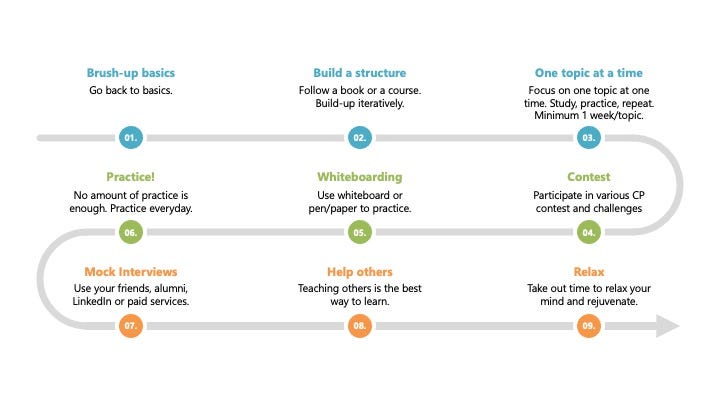All Categories
Featured
Table of Contents

[/image][=video]
[/video]
These concerns are then shared with your future recruiters so you do not get asked the same inquiries two times. Google looks for when employing: Depending on the specific job you're applying for these attributes could be broken down additionally.

In this center area, Google's recruiters commonly repeat the concerns they asked you, record your answers in information, and provide you a score for each quality (e.g. "Poor", "Mixed", "Great", "Superb"). Ultimately recruiters will certainly create a summary of your efficiency and offer a total recommendation on whether they believe Google should be hiring you or not (e.g.
Data Science Vs. Data Engineering Interviews – Key Differences
At this phase, the hiring committee will make a recommendation on whether Google must employ you or not. If the hiring committee suggests that you get employed you'll typically start your group matching process. Simply put, you'll talk with working with managers and one or several of them will require to be ready to take you in their team in order for you to obtain an offer from the firm.
Yes, Google software application designer interviews are extremely tough. The interview procedure is created to thoroughly evaluate a prospect's technological skills and total suitability for the role. It normally covers coding meetings where you'll require to utilize data frameworks or algorithms to solve issues, you can additionally expect behavioral "inform me regarding a time." concerns.
Is Leetcode Enough For Faang Interviews? What You Need To Know
Google software program designers address several of the most tough issues the company encounters with code. It's consequently vital that they have strong problem-solving abilities. This is the component of the meeting where you intend to show that you assume in a structured means and create code that's exact, bug-free, and fast.
Please note the listed here omits system style and behavioral inquiries, which we'll cover later in this write-up. Graphs/ Trees (39% of inquiries, the majority of frequent) Arrays/ Strings (26%) Dynamic programs (12%) Recursion (12%) Geometry/ Maths (11% of questions, least constant) Listed below, we've listed usual examples used at Google for each of these different question kinds.

"Given a binary tree, locate the optimum course amount. "We can turn numbers by 180 degrees to develop new figures.
When 2, 3, 4, 5, and 7 are turned 180 degrees, they end up being invalid. A confusing number is a number that when turned 180 degrees becomes a different number with each number valid. "Provided a matrix of N rows and M columns.
When it attempts to move into a blocked cell, its bumper sensor discovers the barrier and it stays on the current cell. Implement a SnapshotArray that supports pre-defined user interfaces (note: see web link for even more information).
Google Software Engineer Interview Process – What To Expect In 2025

Return the minimal number of rotations so that all the worths in A are the very same, or all the values in B are the same.
In some cases, when keying a personality c, the trick may get long pushed, and the personality will certainly be typed 1 or even more times. You take a look at the keyed in characters of the key-board. Return Real if it is possible that it was your buddies name, with some personalities (perhaps none) being long pushed." (Solution) "Given a string S and a string T, find the minimum window in S which will certainly have all the personalities in T in complexity O(n)." (Solution) "Provided a checklist of inquiry words, return the variety of words that are stretchy." Note: see link for even more information.
"A strobogrammatic number is a number that looks the very same when rotated 180 degrees (looked at upside down). "Offered a binary tree, find the size of the lengthiest course where each node in the path has the very same worth.
Table of Contents
Latest Posts
Apple Software Engineer Interview Questions & How To Answer Them
How To Ace Faang Behavioral Interviews – A Complete Guide
The Easy Way To Prepare For Software Engineering Interviews – A Beginner’s Guide
More
Latest Posts
Apple Software Engineer Interview Questions & How To Answer Them
How To Ace Faang Behavioral Interviews – A Complete Guide
The Easy Way To Prepare For Software Engineering Interviews – A Beginner’s Guide